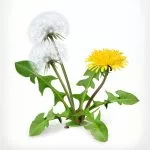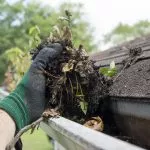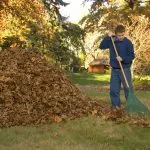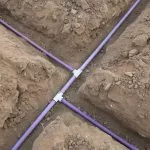In case you’re wondering, the first day of winter is Wednesday, December 21.
Of course, there’s a good chance winter will arrive in full force before its “official” start date.
In any event, if your homeowner backyard isn’t prepared for it now, it’ll pay for it once spring arrives.
But if you follow these 10 preventative tips from Lane’s Landscaping Supplies, your yard will come back strong once winter finally ends (which happens to be Monday, March 20, 2017).
1. Remove any dead annual plants you have
They aren’t coming back to life and you’ll be replacing them in spring anyway.
So it makes sense to get rid of them now before they’re exposed to heavy snow, cold temperatures and blowing wind.
 2. Pull out any pesky weeds
2. Pull out any pesky weeds
It seems like weeds can grow in any type of weather condition.
And while that isn’t the case, if you don’t pull them out now, they’ll just come back and re-establish themselves in spring.
If you have weeds growing in your topsoil or between your interlock pavers and want to get rid of them once and for all, your best bet is to pull them out now.
Otherwise, they may temporarily disappear under the snow and into the cold.
But the seeds will remain and the weeds will simply return.
 3. Clean out your gutters thoroughly
3. Clean out your gutters thoroughly
Leaves, mulch and other gunk left in your eavestroughs can freeze over the winter.
When that happens, they get heavier.
- And if they get too heavy, they’ll end up cracking and breaking your gutters or water spouts.
Or they’ll just stay there and become an obstacle for melting snow and winter rain.
- And if they get in the way, your eavestroughs could overflow, bend, crack or break.
So before it’s too cold and icy, climb up on a ladder and give your gutters a complete cleaning of any dirt and debris.
4. Cut your grass one last time
A question we get asked frequently here is when to stop cutting grass:
- There’s a good chance November is the last month you’ll mow your lawn
- Even if there’s light snow on the ground, you can still give your grass a final cut or two
Once you’ve finished what your certain will be the final grass cutting of 2016, get rid of any leftover grass clippings.
If you don’t, they’ll become wet and stick to your lawn.
And during the winter months, that sticky grass could turn into a mould or fungus which can severely damage your grass.
 5. Rake as many fallen leaves as you can
5. Rake as many fallen leaves as you can
Before you start raking, make sure to read our blog on the smart way to rake leaves.
It’ll save you time (and your back too).
Wet, heavy snow sitting atop wet leaves sitting atop your grass can end up creating dead spots or bald patches in your lawn.
And the last thing you want is to repair dead grass in spring when there was a full spot when you last saw it in winter.
6. Spread winter fertilizer
Once you’ve gotten rid of all those fallen leaves, pull out the spreader and apply winter fertilizer to your lawn.
It’ll help your grass survive the winter and come back strong in spring.
7. Aerate your lawn
Aeration is all about opening up the soil for better air circulation and creating a better environment for the roots of your grass.
Topsoil is prone to compaction because of foot traffic or thatch.
Aerating the soil helps alleviate compaction and ensures that vital nutrients can reach as deeply as possible, even in the middle of winter.
 8. Clear out your irrigation system
8. Clear out your irrigation system
Here’s a true story from one of our customers:
During last winter, a family emergency forced him to fly back home. He wasn’t able to fully drain and shut off his sprinkler system.
When spring arrived, he was shocked to find out his pipes had burst. But the extent of the damage was even worse:
- He had to hire a contractor to dig up his backyard, as the ground became weak and unstable
- Water leaked into the foundation of his home, causing mold in his basement
- His sprinkler system had to be pulled out and reinstalled
He learned his lesson and will now use a landscape service provider to properly and completely empty his irrigation system.
9. Place a tarp under any bird feeders you have
This will prevent fallen seeds from taking root and makes it much easier to clean once spring arrives.
10. Come to Lane’s for all your needs
Whether you need expert advice, want to arrange topsoil delivery or have questions about our products, Lane’s Landscaping Supplies is your go-to source.
Contact us and tell is what you’re looking for. We’ll get back to you fast and help you get your yard winter-ready.



 2. Pull out any pesky weeds
2. Pull out any pesky weeds 3. Clean out your gutters thoroughly
3. Clean out your gutters thoroughly 5. Rake as many fallen leaves as you can
5. Rake as many fallen leaves as you can 8. Clear out your irrigation system
8. Clear out your irrigation system